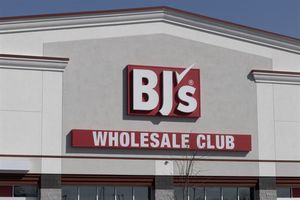Understanding Your Car’s Evolving Technology
By:
StatePoint Media
January 04, 2024 at 01:00 AM EST
SPONSORED CONTENT -- (StatePoint) Over-the-air updates, which are remotely delivered updates to a vehicle’s technology, offer potential benefits to everybody on the road and improve the driving experience. Yet a new study reveals that in many cases, these updates should be accompanied by consumer education. Timely research from Toyota’s Collaborative Safety Research Center (CSRC) and the University of Iowa highlights that drivers are not always sure what new automotive software entails or how to use it. “Our goal is to support the integration of the latest automotive tech so that drivers reap the full benefits of these updates. As we continue to develop new vehicle safety systems, or simply improve the ones we already have, consumer education may help build trust, acceptance and use,” says John Lenneman, Ph.D, senior principal research scientist, Toyota North America, CSRC. This seminal research included two driving simulator studies at the University of Iowa, assessing the understanding of over-the-air updates without consumer education, and measuring the benefit of including consumer education. The project also developed a tool for designers to measure the change in a system following an update. One of CSRC’s primary aims is to share its research, with the hope that the automotive industry can benefit from the findings of its safety advances. That’s why the research team is excited that the study is already having an impact on system design and educational materials, helping designers identify when and how consumer education should be incorporated into updates. For example, the research found that for updates that don’t require interactions from the driver, such as automatic emergency braking, education is not necessarily needed, whereas for other updates, the driver may need a description of what the system does, or even an understanding of what their responsibility is when using the technology. More information about the work of the Toyota Collaborative Research Center can be found by visiting amrd.toyota.com. Over-the-air automotive updates, when combined with proper consumer education, have the potential to make roads safer for everybody. Photo Credit: (c) Maksym Belchenko / iStock via Getty Images Plus More NewsView More
BJ’s Wholesale Club and the Case for a Bullish Market Reversal ↗
Today 11:45 EST
Via MarketBeat
Tickers
BJ

Why Costco Stock May Struggle Even as Its Business Thrives ↗
Today 10:31 EST


3 High Growth Revenue Stocks That Wall Street Loves ↗
Today 8:21 EST
Via MarketBeat

Recent QuotesView More
Stock Quote API & Stock News API supplied by www.cloudquote.io
Quotes delayed at least 20 minutes. By accessing this page, you agree to the Privacy Policy and Terms Of Service.
© 2025 FinancialContent. All rights reserved.
|
